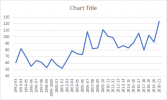one
RefChat Addict
The overall argument is that you don't want to give a goal or a goal scoring opportunity like a pen (and red cards too) from anything that is not clear cut. Careless is not black and white. It has a grey area and in above mentioned situations it has to be very close to clear.
It may seem like inconsistency when defensive free kicks have lower thresholds than attacking free kicks in a penalty area but it is actually consistent in applying the above concept.
An attacker strips the ball off a defender in a 'grey area' foul in the PA creating a GSO you very likely give a foul. A defender wins the ball in a similar way, you play on. This is consistent on both ends. Games should not be lost or won on uncertainty. That's the idea anyway.
It's not directly about what area of the field it happens, it's about the impact of the outcome of an uncertain decision which happens to be bigger when close to goal or in the PA.
It may seem like inconsistency when defensive free kicks have lower thresholds than attacking free kicks in a penalty area but it is actually consistent in applying the above concept.
An attacker strips the ball off a defender in a 'grey area' foul in the PA creating a GSO you very likely give a foul. A defender wins the ball in a similar way, you play on. This is consistent on both ends. Games should not be lost or won on uncertainty. That's the idea anyway.
It's not directly about what area of the field it happens, it's about the impact of the outcome of an uncertain decision which happens to be bigger when close to goal or in the PA.
Last edited:




 . I just haven't got the will today
. I just haven't got the will today